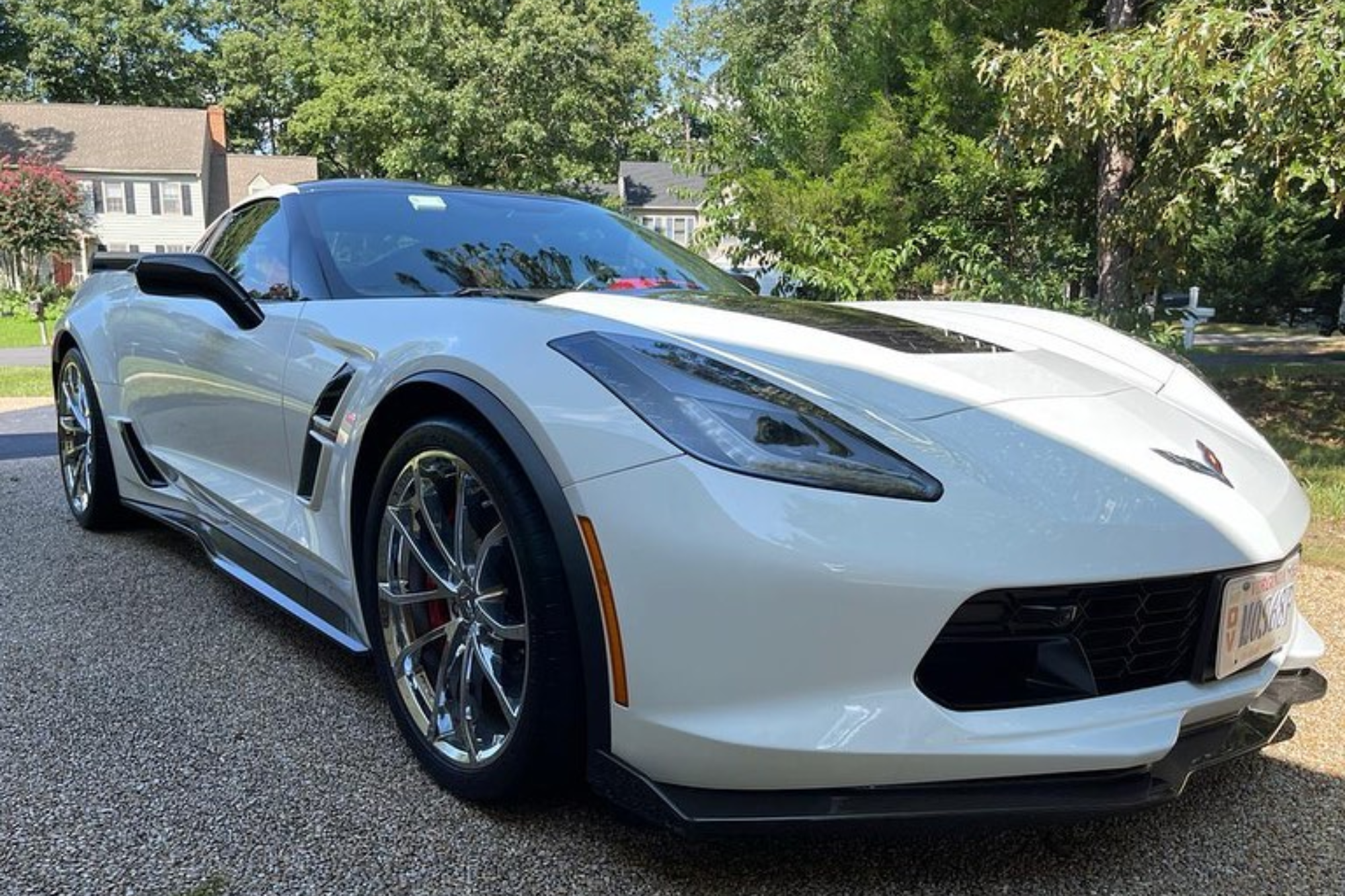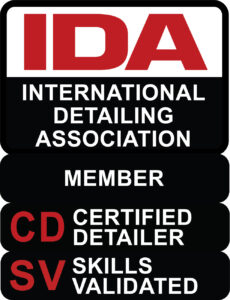Choosing a suitable ceramic coating is essential if you aim to shield your vehicle’s paint from the elements and maintain a lustrous finish for years. With a myriad of options available, selecting the ideal product can be challenging. Understanding the key factors that set various coatings apart is vital in making an informed decision. So, let’s explore the intricate details and nuances that differentiate the best ceramic coatings for long-term vehicle protection.
Key Takeaways
- Exceptional scratch resistance for long-lasting protection.
- Superior UV protection to prevent paint fading.
- High chemical resistance against harmful contaminants.
- Enhanced gloss, shine, and reflectivity for aesthetic appeal.
- Cost-effective solution with long-term durability.
Benefits of Ceramic Coatings
Ceramic coatings offer a high-performance solution for maintaining your vehicle’s aesthetic appeal. They enhance the durability and protection of your vehicle and provide a shield against environmental impacts, such as UV rays, harsh weather conditions, and chemical contaminants.
Ceramic coatings form a chemically resistant layer on the surface of your vehicle, acting as a barrier that prevents oxidation, fading, and corrosion, ultimately prolonging the lifespan of the paint.
When considering the environmental impact, ceramic coatings are a sustainable choice for vehicle protection. Unlike traditional wax or sealants requiring frequent reapplication, ceramic coatings can last years with proper maintenance.
This longevity reduces the need for frequent product reapplication, leading to less waste and a lower overall environmental footprint.
In terms of application techniques, ceramic coatings require precision and expertise to guarantee peak performance. The surface preparation is vital, involving thorough cleaning and decontamination to achieve proper adhesion.
The coating application itself demands attention to detail, with techniques such as cross-hatching to guarantee even coverage. Proper curing time is also essential to allow the coating to bond effectively with the vehicle’s surface.
Application Process Explained
A meticulous application process is imperative to guarantee your car’s ceramic coatings’ peak performance and longevity. Proper preparation is key before applying the ceramic coating. Start by thoroughly washing and decontaminating the vehicle’s surface to ascertain the coating adheres correctly.
Next, carefully inspect the paintwork for any imperfections that need to be addressed before application. When selecting a ceramic coating product, consider factors such as durability, ease of application, and the desired level of protection.
Before starting the application process, working in a controlled environment is essential to avoid dust and debris from compromising the coating. Begin by applying a small amount of the coating to an applicator pad and work in small sections to ascertain even coverage. Use overlapping motions to achieve a uniform application.
Remember to follow the manufacturer’s recommended curing time before exposing the vehicle to moisture. When applying ceramic coating, follow the specific application tips provided by the manufacturer.
These may include the ideal temperature and humidity conditions for application and the recommended number of coating layers. By carefully following these guidelines and selecting the right product for your needs, you can achieve a long-lasting ceramic coating that provides exceptional protection for your vehicle.
Durability and Longevity
Evaluating their durability and longevity is essential for ideal insight into the performance of ceramic coatings. Scratch resistance is a vital factor to consider when protecting your vehicle’s surface.
Ceramic coatings offer exceptional scratch resistance, forming a protective layer that can withstand minor abrasions from daily use. This feature guarantees that your vehicle maintains a sleek appearance for an extended period.
Furthermore, ceramic coatings’ temperature tolerance plays a significant role in their longevity. These coatings exhibit high resistance to temperature fluctuations, making them suitable for various climates and environmental conditions.
Whether exposed to extreme heat or cold, ceramic coatings maintain their protective properties, assuring long-lasting performance.
Ceramic coatings’ durability is unmatched compared to traditional wax or sealant products. With proper application and maintenance, ceramic coatings can protect for several years, offering a cost-effective solution for long-term vehicle care.
Investing in a ceramic coating guarantees superior protection and reduces the need for frequent reapplications, saving you time and money in the long run.
Gloss and Shine Factor
When considering ceramic coatings’ gloss and shine factor for vehicle protection, it’s crucial to evaluate factors such as reflectivity and brilliance.
These attributes play a significant role in enhancing the aesthetic appeal of your vehicle’s paintwork.
Additionally, the ease of maintenance and upkeep contributes to sustaining the glossy finish over an extended period.
Durability and Longevity
The durability and longevity of a ceramic coating play an essential role in maintaining the gloss and shine of your vehicle’s exterior. When considering a ceramic coating for your vehicle, factors such as scratch resistance and how well it withstands environmental factors are vital.
A high-quality ceramic coating can significantly enhance the longevity of your car’s exterior protection, keeping it looking glossy and new for an extended period.
Scratch resistance is a key feature to look for in a ceramic coating. A durable coating will provide a strong barrier against daily wear and tear scratches, preserving the shine of your vehicle’s paintwork.
Additionally, a ceramic coating that can withstand environmental factors like UV rays, acid rain, and pollutants will guarantee that your car’s exterior remains protected over time.
To maintain your vehicle’s gloss and shine, opt for a ceramic coating with excellent durability and longevity. Investing in a coating that offers superior scratch resistance and resilience against environmental factors allows you to enjoy a long-lasting protective layer that keeps your car pristine.
Reflectivity and Brilliance
Achieving a high reflectivity and brilliance in your vehicle’s exterior finish is essential for enhancing its overall aesthetic appeal. When considering ceramic coatings, the reflective properties play a vital role in determining the shine factor of your car.
High-quality ceramic coatings are designed to enhance brilliance, providing a mirror-like finish that beautifully reflects light. The level of reflectivity can vary depending on the specific product used, with some coatings offering a more intense shine than others.
Ceramic coatings with advanced formulas tend to excel in brilliance enhancement. These coatings boost the reflective properties of your vehicle’s surface and create a deep, glossy finish that’s sure to turn heads.
Maintenance and Upkeep
Proper maintenance and upkeep are paramount to guarantee the ongoing gloss and shine of your vehicle’s exterior finish. Utilizing the right cleaning techniques is essential to preserving the longevity of your ceramic coating.
For routine maintenance, opt for pH-neutral car wash soaps to prevent damage to the coating’s hydrophobic properties. Avoid abrasive sponges or brushes that could potentially scratch the surface. Instead, use soft microfiber towels or wash mitts to clean the vehicle gently.
Regarding product recommendations, consider investing in a high-quality car ceramic coating maintenance spray. These sprays not only help maintain the coating’s shine but also enhance its hydrophobic properties.
Applying a ceramic boost product every few months can revitalize the coating’s performance and extend its durability. Remember to follow the manufacturer’s guidelines for the specific ceramic coating you have applied to your vehicle.
Chemical Resistance Comparison
How does the chemical resistance of ceramic coatings compare when evaluating their performance on vehicles?
When it comes to chemical resistance testing and performance evaluation, it’s vital to consider how well a ceramic coating can withstand various chemicals that vehicles are regularly exposed to. Different ceramic coatings offer varying levels of protection against chemicals such as acidic cleaners, gasoline, bird droppings, and other contaminants that can harm the vehicle’s paint.
During chemical resistance testing, coatings are subjected to harsh chemicals to assess their ability to resist staining, etching, or degradation.
In this aspect, performance evaluation of ceramic coatings involves determining how effectively they repel or mitigate the effects of these chemicals, thereby maintaining the vehicle’s appearance and structural integrity over time.
When choosing a ceramic coating for your vehicle, opting for one with high chemical resistance to guarantee long-term protection against environmental hazards is essential.
Look for coatings that have been tested rigorously for their chemical resistance capabilities to make an informed decision based on reliable data rather than marketing claims.
Prioritizing a ceramic coating with superior chemical resistance can appreciably contribute to the durability and longevity of your vehicle’s finish.
UV Protection Capability
Evaluating ceramic coatings’ UV protection capability is vital for effective vehicle protection. UV radiation from the sun can cause significant damage to your vehicle’s exterior over time, leading to paint fading, oxidation, and premature aging.
Ceramic coatings offer superior UV protection compared to traditional waxes or sealants. These coatings create a barrier that shields your vehicle’s paint from harmful UV rays, helping maintain its color and shine for longer periods.
Ceramic coatings achieve this UV protection through their advanced formula, which contains UV inhibitors that act as a shield against the sun’s damaging effects. The chemical structure of ceramic coatings allows them to reflect UV rays, preventing them from penetrating the paint surface and causing damage.
This UV protection capability enhances your vehicle’s aesthetic appeal and provides long-lasting protection against fading and discoloration.
When selecting a ceramic coating for your vehicle, evaluating its UV protection rating is vital. Opt for a coating that offers high UV resistance to guarantee maximum protection against sun damage.
Investing in a ceramic coating with excellent UV protection capability will preserve your vehicle’s beauty and prolong its lifespan, keeping it looking newer for years to come.
Water Beading and Hydrophobicity
As a crucial aspect of ceramic coatings, the water beading and hydrophobicity properties play a significant role in the protective capabilities of these products. When water comes into contact with a ceramic-coated surface, the hydrophobic nature of the coating causes the water to bead up rather than spread out, a phenomenon known as water beading. This effect results from the surface tension created by the ceramic coating, which prevents water from bonding with the surface and encourages it to form into beads that easily roll off the vehicle.
A ceramic coating’s ability to promote water beading is essential for maintaining your vehicle’s cleanliness. By causing water to bead up and roll off the surface, the coating helps to carry away dirt, dust, and other contaminants, leaving your vehicle looking cleaner for longer periods.
The hydrophobic properties of ceramic coatings also aid in water sheeting, where water slides off the surface in sheets rather than forming droplets. This contributes to a cleaner appearance and reduces the chances of water spots forming on your vehicle’s surface.
Maintenance Requirements
The water beading and hydrophobicity properties of ceramic coatings contribute to the protective shield for your vehicle and impact its maintenance requirements. Proper maintenance is vital to guarantee the longevity and effectiveness of the ceramic coating on your vehicle.
Here are some key maintenance requirements to take into account:
- Application Frequency: The longevity of ceramic coatings varies, but a general recommendation is to reapply the coating every 1 to 2 years to maintain peak protection. However, this can be influenced by factors such as the quality of the coating and the conditions the vehicle is exposed to.
- Product Compatibility: Compatible maintenance products are essential to avoid damaging the ceramic coating. Always refer to the manufacturer’s guidelines to ensure your products are safe for the coating.
- Regular Washing: Regularly washing your vehicle is vital to remove dirt, grime, and contaminants that can compromise the ceramic coating. Use a pH-neutral car shampoo and a soft microfiber wash mitt to prevent scratching.
- Protective Measures: Consider additional protective measures, such as using a top coat or spray sealant to enhance the durability of the ceramic coating and provide an extra layer of protection against environmental elements.
Cost-Effectiveness Analysis
Analyzing the cost-effectiveness of ceramic coatings for vehicle protection involves a thorough assessment of initial investment versus long-term benefits.
When conducting a value assessment of ceramic coatings, it is essential to compare the prices of different products and their durability. While the initial cost of ceramic coating may seem higher than traditional waxing or sealants, the long-term benefits often outweigh this initial investment.
Ceramic coatings stand out for their longevity and durability when compared to price. Unlike wax or sealants requiring frequent reapplication, ceramic coatings can last years with proper maintenance.
This extended lifespan translates to cost savings over time, as you won’t need to spend money on frequent reapplications or detailing services.
Moreover, ceramic coatings’ protective qualities contribute to the cost-effectiveness equation. By forming a strong barrier against environmental contaminants, UV rays, and minor scratches, ceramic coatings help preserve your vehicle’s paintwork and reduce the need for expensive repairs or repainting in the future.
In conclusion, when evaluating the top ceramic coatings for long-term vehicle protection, it’s evident that their benefits, including outstanding durability, chemical resistance, and UV protection, justify the initial investment. The enhanced gloss, ease of maintenance, and overall cost-efficiency make ceramic coatings an excellent option for maintaining your vehicle’s appearance. Ralda’s Details LLC offers Ceramic Coating Services, providing a smart solution for those seeking long-lasting protection and a sleek, polished finish for their vehicles.


